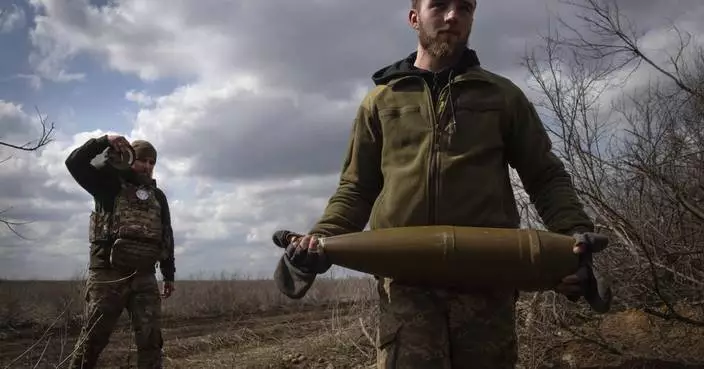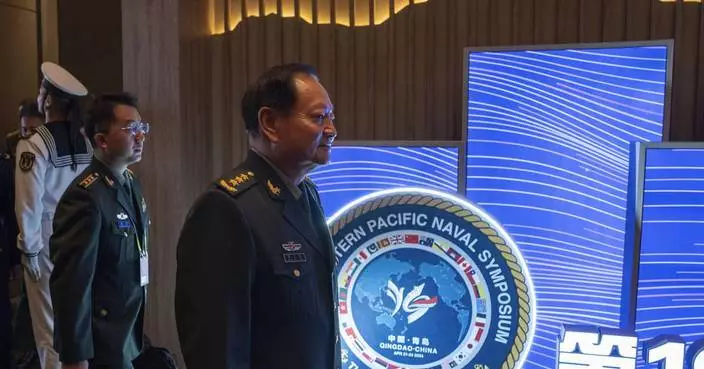Civil rights attorney Bryan Stevenson rarely slows down, friends and family say. It seems he's always looking over details on death penalty cases from his Montgomery, Alabama-based Equal Justice Initiative. If he's not speaking on the criminalization of black men, Stevenson is researching another historical site connected to an episode of racial violence.
But a new HBO documentary on Stevenson attempts to get him to sit, speak and explain why he believes the legacy of lynchings of African Americans in the U.S. is directly linked to those who have wrongly been put on death row. In his mind, racial structures of oppression have remained in the U.S. judicial system since the Jim Crow-era and the death penalty is merely their direct descendant.
"Most people don't know about our history of lynching," Stevenson told The Associated Press in a phone interview shortly after receiving news Friday that the Supreme Court had overturned the death sentence for Curtis Flowers , a Mississippi black man. "People have never been required to talk about it. But when you sit and think about it, the correlation is there."
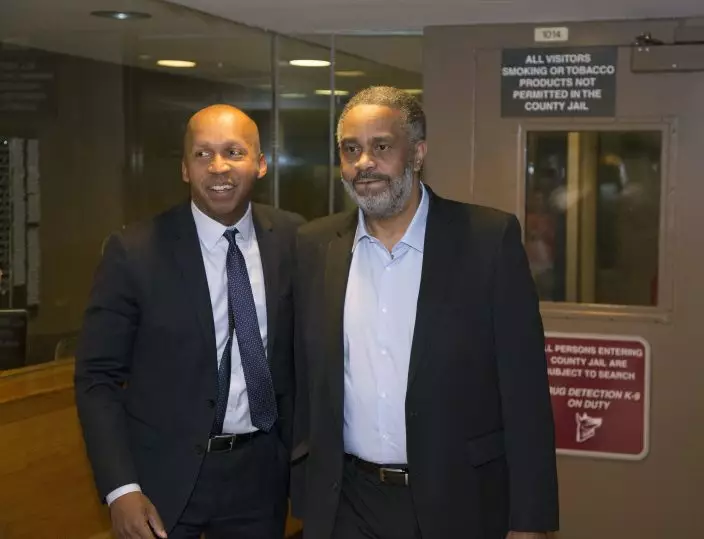
FILE - This April 3, 2015 file photo shows attorney Bryan Stevenson, left, leaving Jefferson County jail in Birmingham, Ala., with Anthony Ray Hinton, who spent nearly 30 years on Alabama's death row for the 1985 slaying of two fast-food managers. In the documentary, “True Justice: Bryan Stevenson’s Fight for Equality,” airing Wednesday on HBO, Hinton talks about sitting on death row. (AP Photo Hal Yeager, File)
Stevenson said the white lynch mob transformed into a formal judicial process in which often white prosecutors, white judges and largely white juries are tasked with deciding if a poor, black male accused of a crime is sentenced to death.
"True Justice: Bryan Stevenson's Fight for Equality," set to air Wednesday on HBO, shows how the Harvard-trained attorney is now dedicating his life to forcing the U.S. to face the violence experienced by its communities of color.
The Delaware-born Stevenson gained national attention in 1993 after he helped exonerate Walter McMillian, a 46-year-old black pulpwood worker on death row. McMillian had been sentenced to death for the 1986 fatal shooting of an 18-year-old white woman in an Alabama town where Harper Lee wrote "To Kill a Mockingbird." But Stevenson was able to prove that a key witness had lied and prosecutors withheld important evidence.
The attorney then helped exonerate Anthony Ray Hinton in 2015, an African American man who spent 30 years on death row in Alabama after he was convicted for the 1985 slaying of two fast-food managers. Stevenson was able to show that experts could prove Hinton's mother's gun, the one prosecutor said was using in the killings, couldn't have been the one used in the shooting.
In the documentary, Hinton talks about sitting on death row and being forced to smell the burning flesh of other inmates in the electric chair as a jail guard taunted him.
The film comes as the country prepares to mark the 100th anniversary of "Red Summer" — a period in 1919 when white mobs attacked and murdered African Americans in dozens of cities across the U.S. Hundreds of African Americans, some still in their World War I uniforms, were lynched, tortured and forced from homes amid heightened racial tensions and the rise of the revived Ku Klux Klan.
It also comes as Latino academics and activists with the group Refusing to Forget are working to educate the public on violence committed by white mobs and the Texas Rangers that claimed thousands of people of Mexican descent in the American Southwest from 1910 to 1920.
Stevenson said he hopes the documentary helps other communities of color think about how they can memorialize historical sites connect to their unique past. But he said African Americans have a distinct history connected to slavery and that should not be ignored.
"This kind of lawlessness affected all kinds of communities of color," Stevenson said. "But it's not the same. Lynching starts with enslavement. Black people didn't come here as immigrants."
"True Justice" will be available on HBO NOW, HBO GO, and other streaming platforms.
Russell Contreras is a member of The Associated Press' race and ethnicity team. Follow him on Twitter at http://twitter.com/russcontreras .
KYIV, Ukraine (AP) — A big, new package of U.S. military aid will help Ukraine avoid defeat in its war with Russia. Winning will still be a long slog.
The arms and ammunition in the $61 billion military aid package should enable Ukraine to slow the Russian army's bloody advances and block its strikes on troops and civilians. And it will buy Ukraine time — for long-term planning about how to take back the fifth of the country now under Russian control.
“Ultimately it offers Ukraine the prospect of staying in the war this year,” said Michael Clarke, visiting professor in war studies at King’s College London. “Sometimes in warfare you’ve just got to stay in it. You’ve just got to avoid being rolled over.”
The U.S. House of Representatives approved the package on Saturday after months of delays by some Republicans wary of U.S. involvement overseas. It was passed by the Senate on Tuesday, and President Joe Biden said he would sign it Wednesday.
The difference could be felt within days on the front line in eastern and southern Ukraine, where Russia’s much larger army has been slowly taking territory against massively outgunned Ukrainian forces.
The aid approval means Ukraine may be able to release artillery ammunition from dwindling stocks that it has been rationing. More equipment will come soon from American stocks in Poland and Germany, and later from the U.S.
The first shipments are expected to arrive by the beginning of next week, said Davyd Arakhamia, a lawmaker with Ukrainian President Volodymyr Zelenskyy’s Servant of the People party.
But opposition lawmaker Vadym Ivchenko, a member of the Ukrainian parliament’s National Security, Defense and Intelligence Committee, said logistical challenges and bureaucracy could delay shipments to Ukraine by two to three months, and it would be even longer before they reach the front line.
While details of the shipments are classified, Ukraine’s most urgent needs are artillery shells to stop Russian troops from advancing, and anti-aircraft missiles to protect people and infrastructure from missiles, drones and bombs.
What’s coming first is not always what front-line commanders need most, said Arakhamia, the Ukrainian lawmaker. He said that even a military giant like the U.S. does not have stockpiles of everything.
“The logic behind this first package was, you (the U.S.) finds our top priorities and then you see what you have in the warehouses,” Arakhamia said. “And sometimes they do not match.”
Hope for future breakthroughs for Ukraine still hangs on more timely deliveries of Western aid, lawmakers acknowledge.
Many experts believe that both Ukraine and Russia are exhausted by two years of war and won’t be able to mount a major offensive — one capable of making big strategic gains — until next year.
Still, Russia is pushing forward at several points along the 1,000-kilometer (600-mile) front, using tanks, wave after wave of infantry troops and satellite-guided gliding bombs to pummel Ukrainian forces. Russia is also hitting power plants and pounding Ukraine’s second-largest city, Kharkiv, which is only about 30 kilometers (some 20 miles) from the Russian border.
Ivchenko said the goal for Ukraine’s forces now is to “hold the line” until the bulk of new supplies arrive by mid-summer. Then, they can focus on trying to recapture territory recently lost in the Donetsk region.
“And probably ... at the end of summer we’ll see some movement, offensive movement of the Ukrainian armed forces,” he said.
Some military experts doubt Ukraine has the resources to mount even small offensives very soon.
The U.S. funding “can probably only help stabilize the Ukrainian position for this year and begin preparations for operations in 2025,” said Matthew Savill, director of military sciences at the Royal United Services Institute, a think tank.
In the best-case scenario for Ukraine, the American aid will give commanders time to reorganize and train its army — applying lessons learned from its failed summer 2023 offensive. It may also galvanize Ukraine’s allies in Europe to increase aid.
“So this just wasn’t about Ukraine and the United States, this really affected our entire 51-country coalition,” said U.S. Congressman Bill Keating, a Democrat who visited Kyiv on Monday as part of a four-member congressional delegation.
Zelenskyy insists Ukraine's war aim is to recapture all its territory from Russia — including Crimea, seized illegally in 2014. Even if the war ultimately ends through negotiation, as many experts believe, Ukraine wants to do that from as strong a position as possible.
Whatever happens on the battlefield, Ukraine still faces variables beyond its control.
Former U.S. President Donald Trump, who seeks to retake the White House in the November election, has said he would end the war within days of taking office. And the 27-nation Europe Union includes leaders like Hungarian President Viktor Orbán and Slovakian Prime Minister Richard Fico, who have opposed arming Ukraine.
Ukraine’s allies have held back from supplying some arms out of concern about escalation or depleting their own stocks. Ukraine says that to win the war it needs longer-range missiles it could use for potentially game-changing operations such as cutting off occupied Crimea, where's Russia's Black Sea fleet is based.
It wants Army Tactical Missile Systems, known as ATACMs, from the U.S. and Taurus cruise missiles from Germany. Both governments have resisted calls to send them because they are capable of striking targets deep within Russian territory.
The new bill authorizes the president to send Ukraine ATACMS “as soon as practicable.” It's unclear what that will mean in practice.
Sometimes, promised weapons have arrived late, or not at all. Zelenskyy recently pointed out that Ukraine is still waiting for the F-16 fighter jets it was promised a year ago.
Meanwhile, Russia is using its advantage in troops and weapons to push back Ukrainian forces, perhaps seeking to make maximum gains before Ukraine's new supplies arrive.
For weeks it has pummeled the small eastern city of Chasiv Yar, at the cost of 900 soldiers killed and wounded a day, according to the U.K. Ministry of Defense.
Capturing the strategically important hill town would allow them to move toward Sloviansk and Kramatorsk, key cities Ukraine controls in the eastern region of Donetsk. It would be a significant win for Russian President Vladimir Putin, who Western officials say is bent on toppling Ukraine’s pro-Western government.
Russian pressure was aimed not just at gaining territory, but on undermining Zelenskyy and bolstering critics who say his war plan is failing, said Clarke of King's College London.
The U.S. aid package decreases the likelihood of a political crisis in Ukraine, and U.S. Speaker Mike Johnson deserves credit for pushing it through Congress, he said.
"He held history in his hands,” Clarke said.
Follow AP’s coverage of the war in Ukraine at https://apnews.com/hub/russia-ukraine
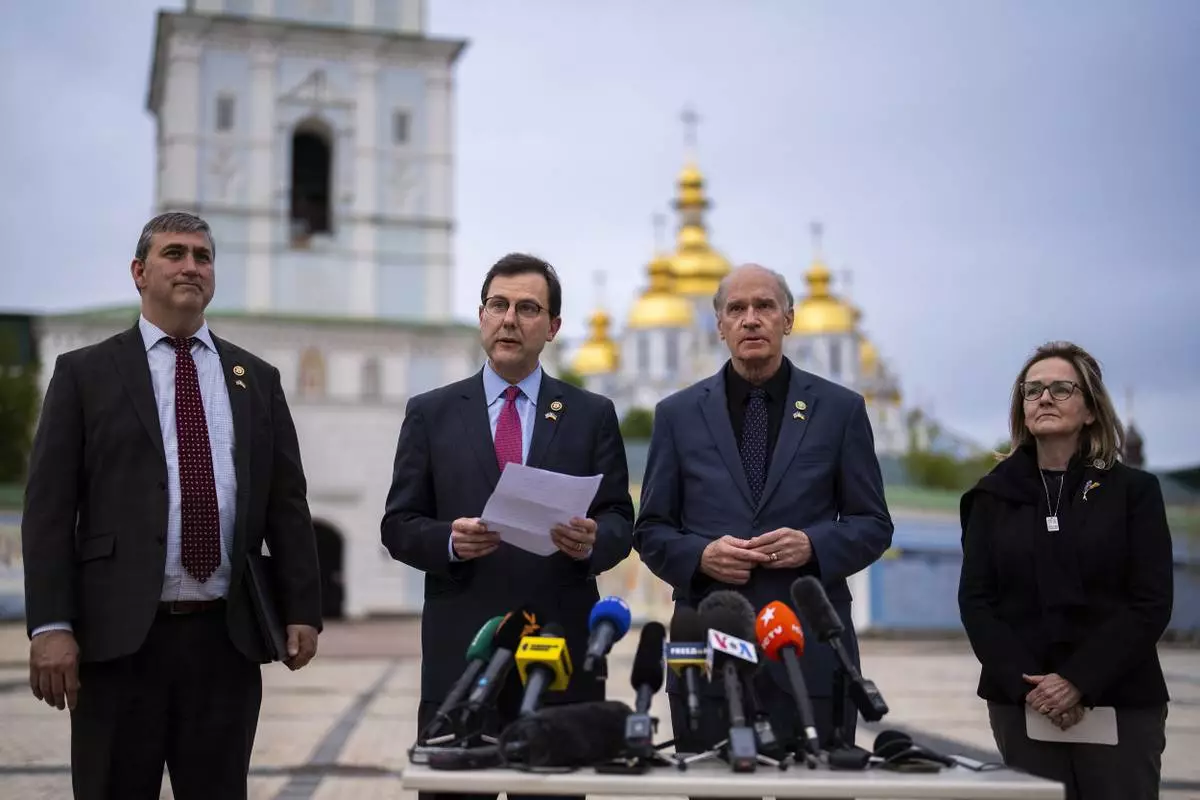
From left, U.S. representatives Nathaniel Moran, R-Tx, Tom Kean Jr, R-NJ, Bill Keating, D-Mass, and Madeleine Deane, D-Pa, talk to journalists during a joint news conference outside Saint Michael cathedral in Kyiv, Ukraine, Monday, April 22, 2024. A newly approved package of $61 billion in U.S. aid may prevent Ukraine from losing its war against Russia. But winning it will be a long slog. (AP Photo/Francisco Seco)
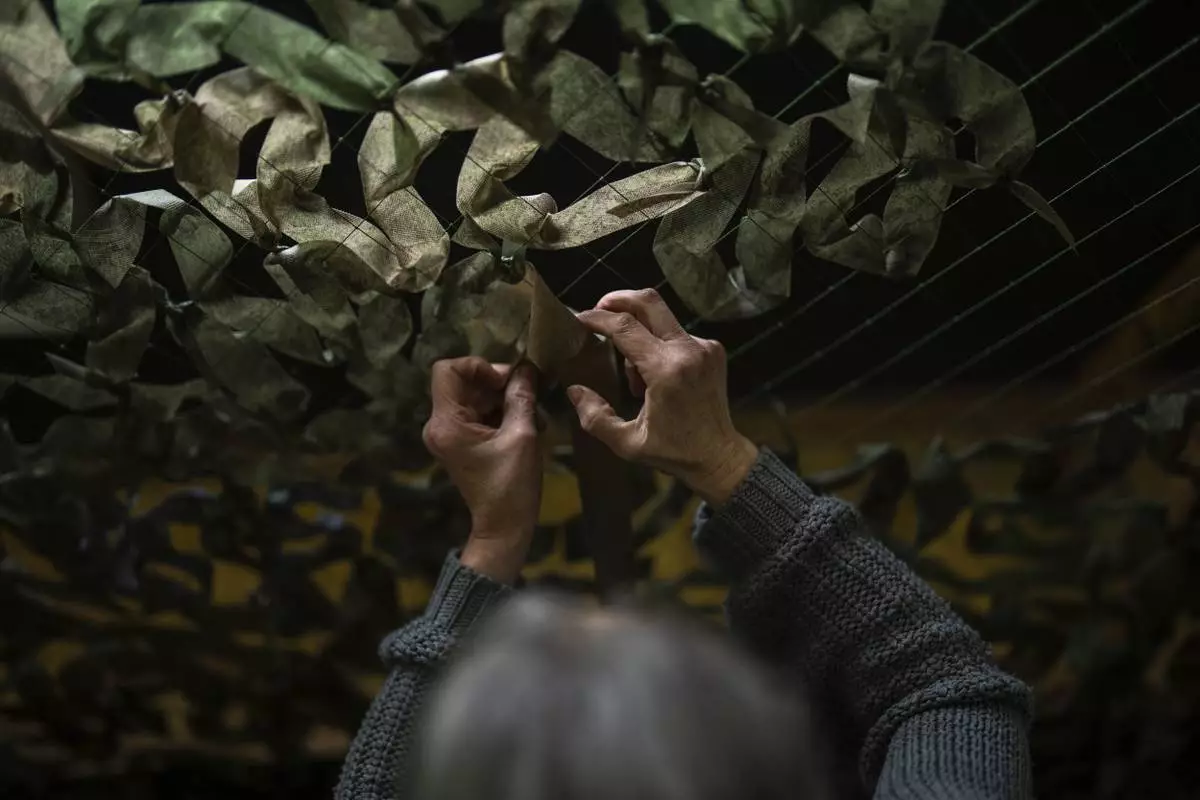
A volunteer makes a camouflage net at a facility producing material for Ukrainian soldiers in Kyiv, Ukraine, Monday, April 22, 2024. A newly approved package of $61 billion in U.S. aid may prevent Ukraine from losing its war against Russia. But winning it will be a long slog. (AP Photo/Francisco Seco)
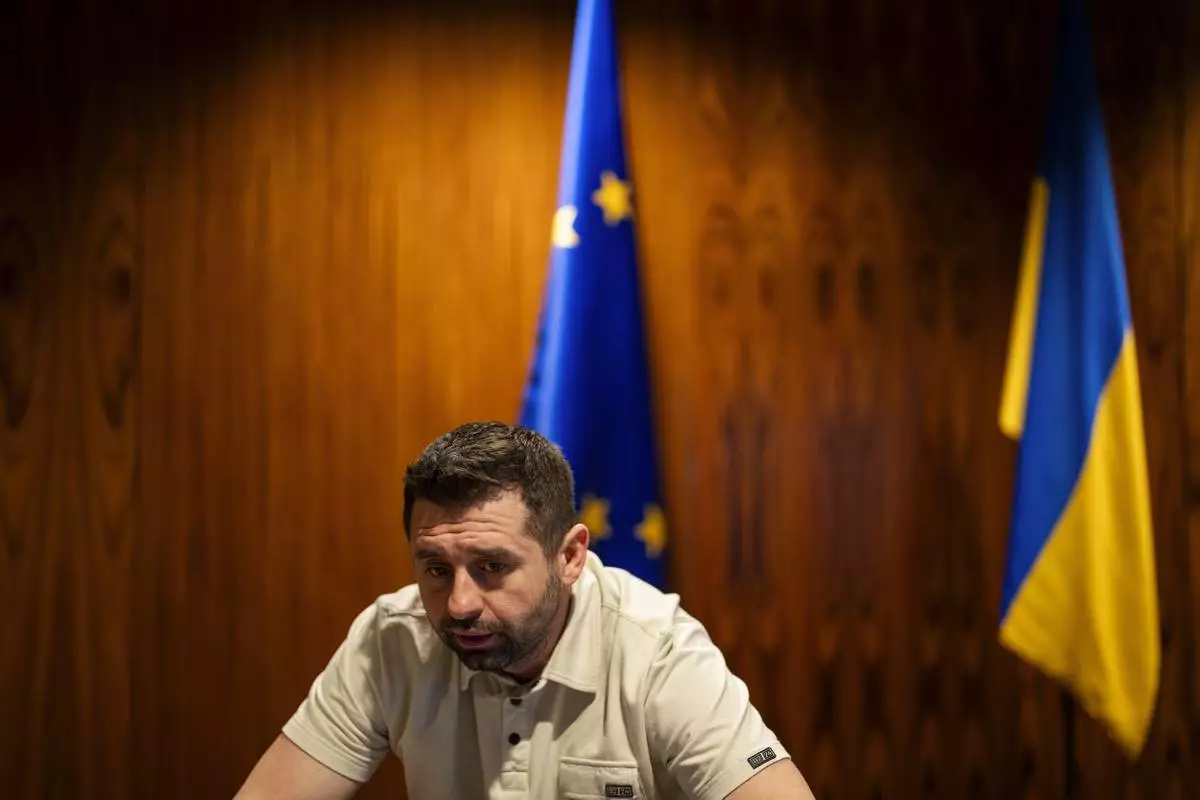
Davyd Arakhamia, a lawmaker with Ukrainian President Volodymyr Zelenskyy's Servant of the People party, talks during an interview with Associated Press in Kyiv, Ukraine, Monday, April 22, 2024. (AP Photo/Francisco Seco)
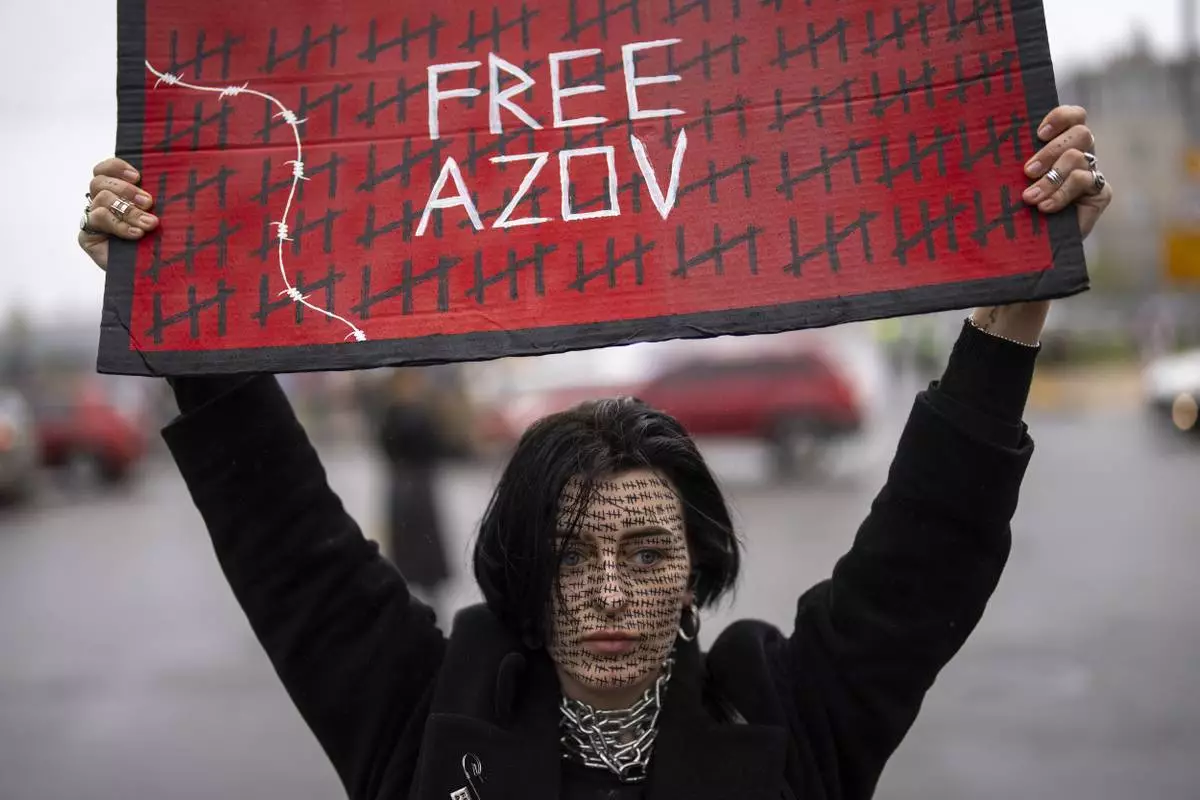
A woman rallies to raise awareness on the fate of Ukrainian prisoners of war in Kyiv, Ukraine, Sunday, April 21, 2024. (AP Photo/Francisco Seco)
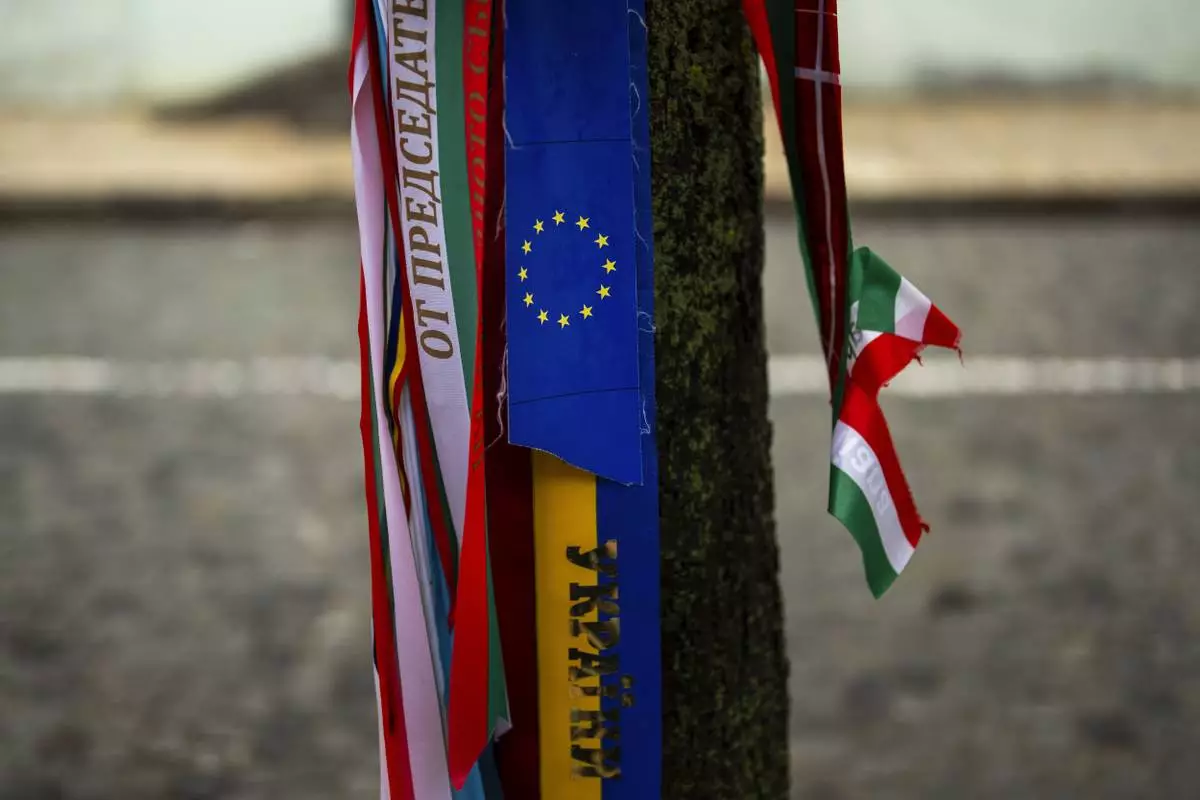
Ribbons with the colors of the European Union and Ukraine are attached to a tree next to memorial wall of Ukrainian soldiers killed during the war in Kyiv, Ukraine, Monday, April 22, 2024. (AP Photo/Francisco Seco)
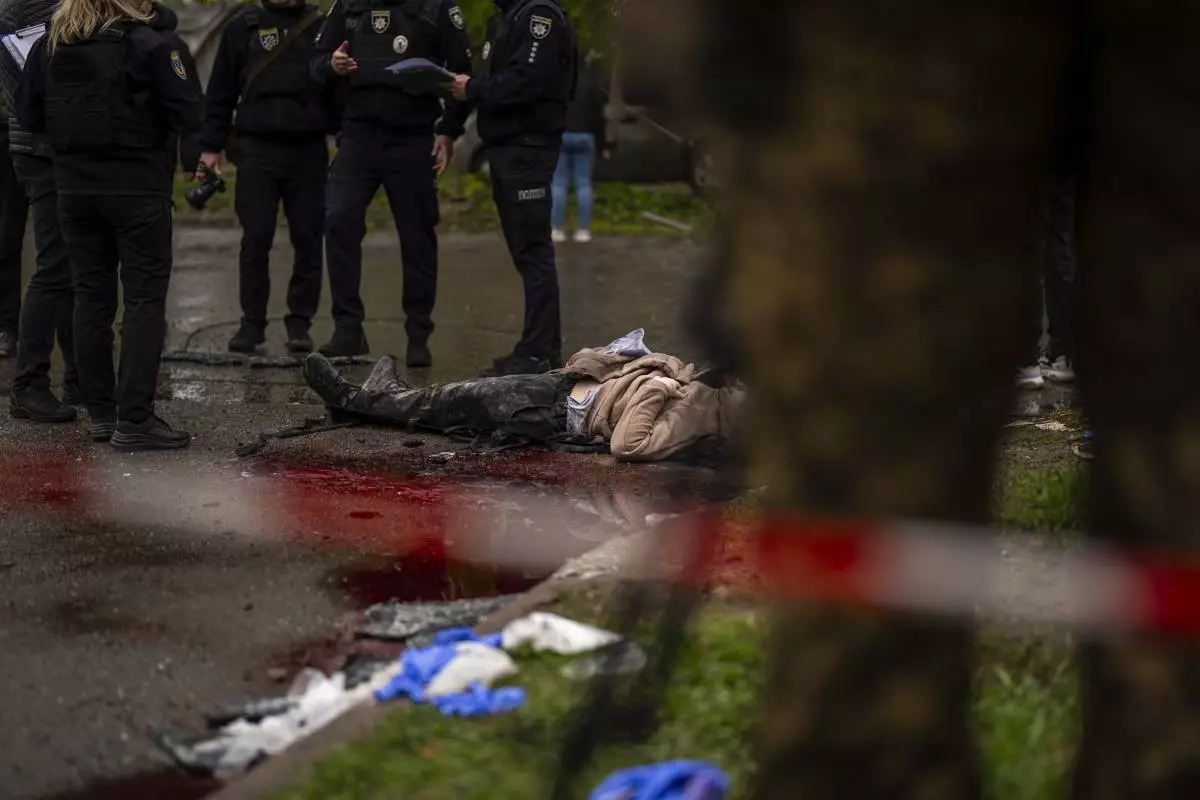
The body of a woman killed by Russian bombardment in Chernihiv, Ukraine, Wednesday, April 17, 2024. (AP Photo/Francisco Seco)

Soldiers carry the coffins of two Ukrainian army sergeants during their funeral in Lviv, Ukraine, Tuesday, April 16, 2024. (AP Photo/Francisco Seco)














